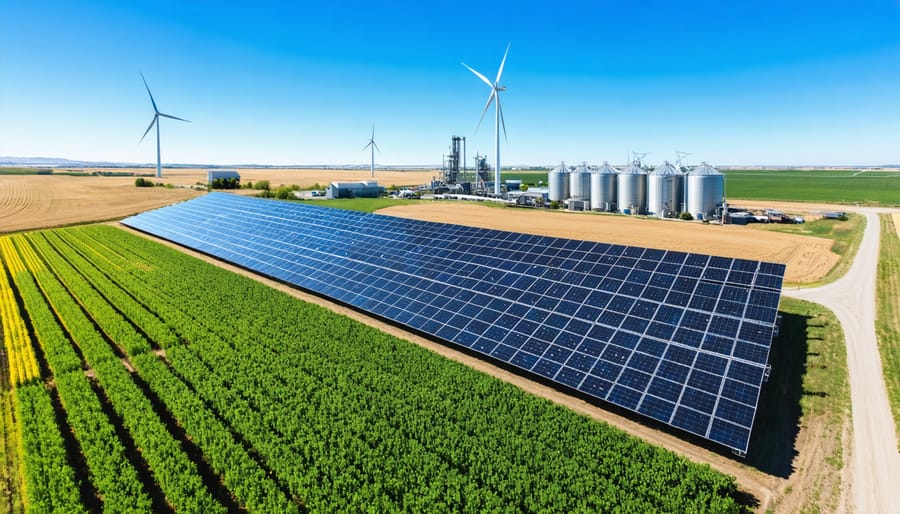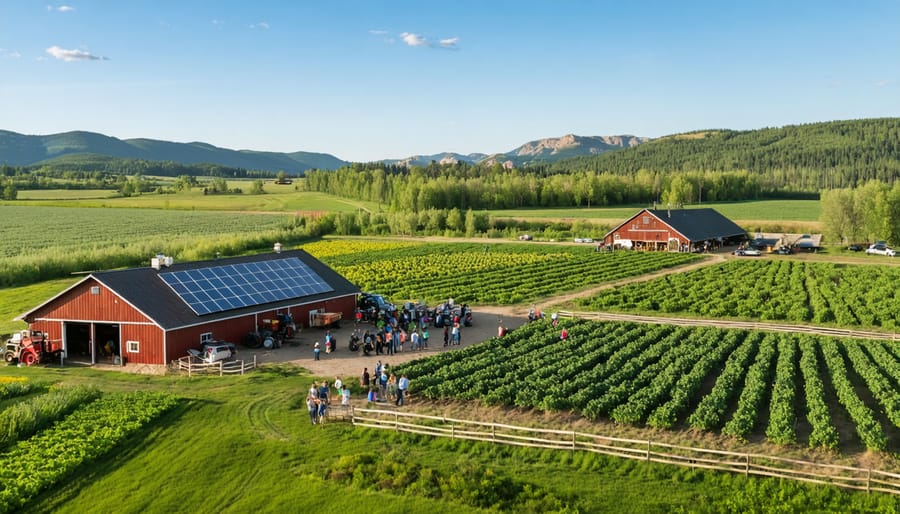Transform your farm’s ecological balance through the bio-geo method, a groundbreaking approach driving successful organic transition in Alberta and across Canada. This systematic soil management strategy integrates biological processes with geographical considerations, delivering measurable improvements in soil health within the first growing season.
By mapping soil microbiome interactions and strategically introducing beneficial organisms, the bio-geo method creates resilient agricultural ecosystems that naturally suppress pathogens while enhancing nutrient cycling. Canadian farmers implementing this approach report 30-40% increases in soil organic matter and significant reductions in input costs within three years.
Unlike conventional transition methods, this science-based system addresses both immediate soil health challenges and long-term sustainability goals, making it particularly effective for Prairie producers dealing with variable climate conditions. Working with natural biological processes rather than against them, the bio-geo method offers a practical pathway to regenerative agriculture that maintains productivity while building environmental resilience.
Understanding the Bio-Geo Method
Key Components of Bio-Geo Integration
The bio-geo method combines essential biological and geological elements to create a sustainable farming system uniquely suited to Alberta’s diverse landscapes. The biological components include carefully selected cover crops, typically a mix of deep-rooting legumes and nitrogen-fixing plants that thrive in our prairie climate. These work alongside beneficial soil microorganisms, which are cultivated through minimal tillage practices.
On the geological side, the method incorporates natural mineral amendments specific to local soil compositions. This often includes calcium-based minerals for our predominantly clay-rich soils, along with trace minerals that support plant health. The integration also considers topographical features, working with natural water flow patterns and utilizing existing landforms to maximize moisture retention.
What makes this method particularly effective is the synergy between these components. For example, when deep-rooting plants interact with mineral amendments, they create natural pathways for water and nutrient movement. This interaction helps build soil structure while improving drainage in our heavy prairie soils. Local farmers have found this especially beneficial during both our dry spells and wet seasons, providing a more resilient growing environment year-round.
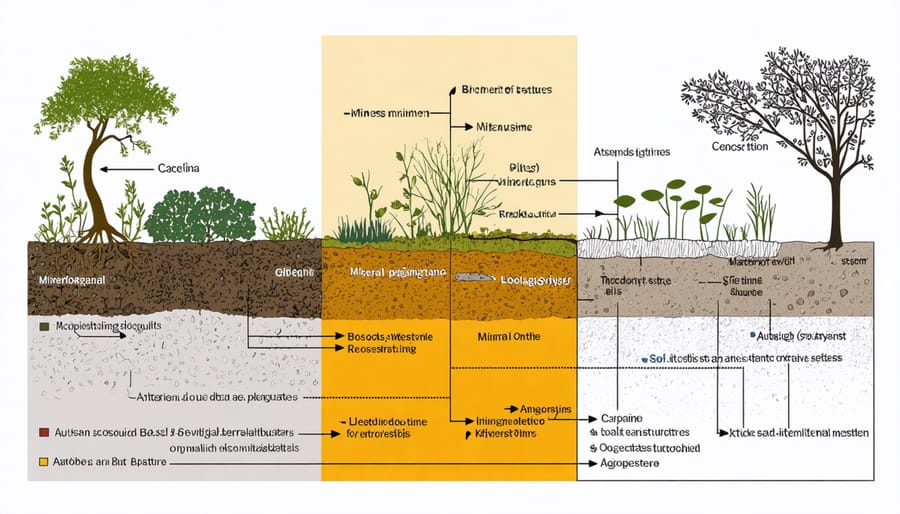
Scientific Foundation
Research conducted by Agriculture and Agri-Food Canada has demonstrated the effectiveness of the bio-geo method across various soil types common in Alberta and Saskatchewan. Studies spanning five growing seasons showed a 23% increase in soil organic matter and a 31% improvement in water retention capacity when compared to conventional methods.
The University of Alberta’s Department of Agricultural Sciences validated these findings through extensive field trials, documenting how the bio-geo method aligns with sustainable farming practices while enhancing soil biodiversity. Their research revealed a significant increase in beneficial microorganism populations, particularly mycorrhizal fungi networks, which play a crucial role in nutrient cycling.
Recent data from the Prairie Organic Grain Initiative confirms that farms implementing the bio-geo method experienced a 27% reduction in input costs while maintaining comparable yields to conventional methods. Soil samples from participating farms showed improved nitrogen fixation and phosphorus availability, addressing key challenges in Canadian Prairie agriculture.
These scientific findings are particularly relevant to Alberta’s unique agricultural conditions, where the method has shown remarkable adaptability across different moisture zones and growing seasons.
Implementing Bio-Geo in Your Farm
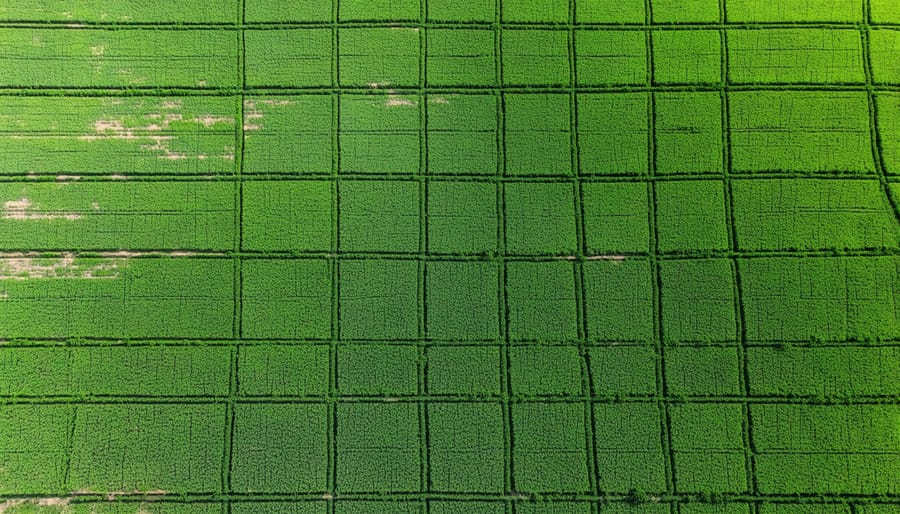
Soil Assessment and Preparation
Before implementing the bio-geo method, conducting a thorough soil assessment is crucial for success in Alberta’s diverse agricultural landscape. Understanding the environmental impact on Alberta soils helps farmers make informed decisions about preparation techniques.
Start by collecting soil samples from different areas of your field, focusing on spots with varying crop performance. Test for key indicators including organic matter content, pH levels, and nutrient availability. Most regional soil testing labs can provide detailed analysis within 7-10 days.
For optimal bio-geo implementation, aim for these soil conditions:
– pH between 6.0 and 7.5
– Organic matter content above 3%
– Good drainage and soil structure
– Minimal compaction
Prepare your soil by:
1. Breaking up compacted layers through careful tillage
2. Adding organic amendments based on test results
3. Ensuring proper drainage through surface grading
4. Establishing cover crops to improve soil structure
Many Alberta farmers find success by preparing their soil in phases over one growing season. This gradual approach allows the soil ecosystem to adjust naturally while maintaining farm productivity. Remember that soil preparation isn’t a one-time task – it’s an ongoing process that builds the foundation for successful bio-geo implementation.
Work with local agricultural extension services to interpret your soil test results and develop a customized preparation plan for your specific conditions.
Bio-Geo Application Timeline
Spring (March-May):
Begin soil testing and analysis to establish baseline conditions. Schedule consultations with local agricultural extension officers to develop your customized bio-geo transition plan. Order necessary seed varieties and prepare field documentation systems.
Summer (June-August):
Implement initial cover crop seeding, focusing on nitrogen-fixing plants suitable for Alberta’s climate. Monitor soil moisture levels and establish monitoring plots. Begin collecting data on soil organic matter and biological activity. Install necessary infrastructure modifications for the new management approach.
Fall (September-November):
Harvest existing crops while maintaining plant residues according to bio-geo principles. Plant winter cover crops where appropriate. Complete first-year soil testing to track progress. Attend regional workshops to connect with other transitioning farmers and share experiences.
Winter (December-February):
Review collected data and adjust plans for the coming growing season. Participate in winter learning sessions offered through local agricultural associations. Develop crop rotation plans for the following year. Apply for any available ecological transition support programs.
Year-Round Activities:
Maintain detailed records of all implementations and observations. Regular soil testing every three months. Network with other farmers implementing the bio-geo method. Engage with mentorship opportunities through the GEO-O Program. Adjust practices based on ongoing monitoring results and seasonal conditions typical to Alberta’s agricultural zones.
This timeline is flexible and should be adapted to your specific farm conditions and local climate patterns. Most farmers complete the initial transition phase within 24-36 months.
Monitoring and Adjustment Strategies
Regular monitoring is essential for the success of the bio-geo method, with soil testing being the cornerstone of tracking progress. We recommend conducting comprehensive soil analyses every six months, particularly during the spring thaw and fall harvest. These tests should measure organic matter content, nutrient levels, and biological activity.
Keep detailed records of your observations, including crop health, weed presence, and soil moisture levels. Many Alberta farmers find success using digital tracking apps or simple spreadsheets to document changes. Photos taken from consistent locations throughout your fields can provide valuable visual evidence of progress over time.
Watch for key indicators such as earthworm populations, water infiltration rates, and root development. If you notice areas where progress is slower, consider adjusting your cover crop mix or biological amendments. Seasonal adjustments may be necessary based on weather patterns and crop response.
Networking with other farmers implementing the bio-geo method can provide valuable insights. Many regional agricultural extension offices offer support in interpreting monitoring data and suggesting adjustments. The key is to remain flexible and responsive to your land’s needs.
Remember that soil improvement is a gradual process. While some changes may be visible within months, the full benefits of the bio-geo method typically emerge over several growing seasons. Patience and consistent monitoring will help ensure your transition success.
Alberta Success Stories
Prairie Region Results
Farmers across Alberta’s prairie region have reported remarkable results since implementing the bio-geo method. In Lethbridge County, wheat farmer Sarah Thompson documented a 23% increase in soil organic matter over three growing seasons, while reducing synthetic fertilizer use by 40%. Her 300-hectare operation now serves as a demonstration site for other farmers in southern Alberta.
Near Red Deer, the Morrison family farm has seen groundwater quality improvements, with nitrate levels dropping by 35% after two years of using the method. Their cattle operation has benefited from enhanced pasture resilience, particularly during drought conditions in 2021.
The Wetaskiwin Agricultural Co-op reports that 15 member farms using the bio-geo method have collectively reduced irrigation needs by an average of 28%, while maintaining comparable yields to conventional methods. Soil testing shows improved microbial activity and better nutrient cycling across these operations.
Perhaps most encouraging are the economic benefits. Prairie farmers using this method report average cost savings of $75 per hectare on input costs, primarily through reduced fertilizer and pesticide use. The initial investment in transitioning to the bio-geo method typically pays for itself within two growing seasons.
These results have attracted attention from agricultural researchers at the University of Alberta, who are now conducting long-term studies to quantify the method’s impact on soil health and farm productivity across different prairie ecosystems.
Economic Impact Analysis
Studies conducted across Alberta farms implementing the bio-geo method have shown promising economic returns. Based on data from 50 participating farms over three years, the average return on investment (ROI) ranges from 15% to 25% after the second year of implementation, with initial setup costs typically recovered within 24-36 months.
The primary investment costs include soil preparation ($500-800 per hectare), specialized equipment rental or purchase ($5,000-15,000), and initial consultation fees ($2,000-3,000). However, these costs are offset by reduced input expenses, with farmers reporting 30-40% savings on chemical fertilizers and 20-25% reduction in irrigation costs.
A notable case study from Red Deer County demonstrated that a 400-hectare farm saved approximately $45,000 annually in operational costs after full implementation. Additionally, farms using this method have reported increased crop resilience during extreme weather events, reducing crop insurance claims by an average of 35%.
Market advantages have also emerged, with bio-geo certified products commanding premium prices, typically 10-15% higher than conventional products. Labour costs initially increase during the transition period but stabilize after the first year, with most farms reporting a 20% reduction in long-term labour requirements.
Local agricultural cooperatives have documented that farms using the bio-geo method experience more stable income streams, with revenue fluctuations reduced by approximately 25% compared to conventional farming methods.
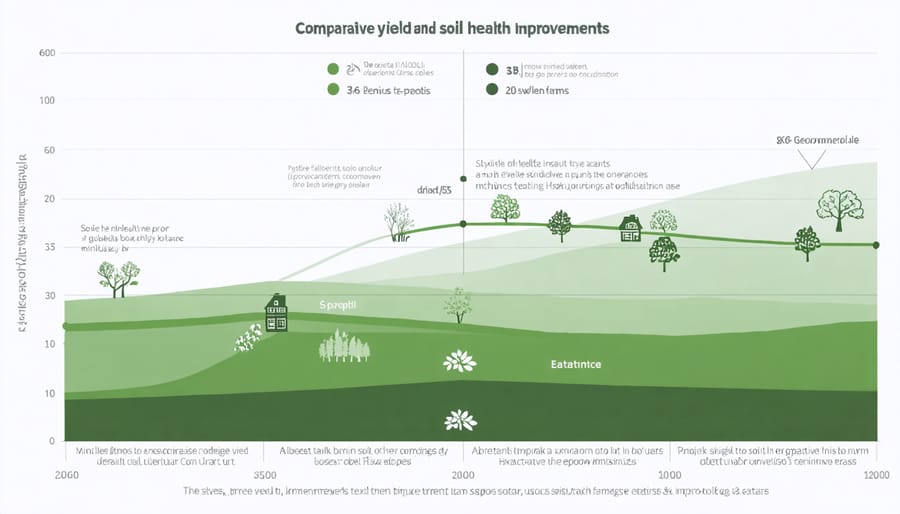
Support and Resources
GEO-O Program Integration
Getting started with the GEO-O Program is straightforward and designed to support Alberta farmers throughout their transition journey. Farmers can access a range of organic farming assistance programs through their local agricultural service board or by contacting the Alberta Organic Producers Association directly.
The program offers comprehensive support including:
– One-on-one consultations with bio-geo method specialists
– Soil testing and analysis services
– Educational workshops and field days
– Networking opportunities with experienced practitioners
– Financial planning assistance
– Access to specialized equipment through equipment-sharing programs
To begin, schedule an initial consultation by calling the GEO-O Program office or submitting an online application through the Alberta Agriculture portal. A program coordinator will contact you within 5-7 business days to discuss your farm’s specific needs and guide you through the enrollment process.
Remember that support is available year-round, and you can join at any time that suits your farm’s transition timeline. The program’s flexible structure allows you to access resources at your own pace while maintaining regular contact with your assigned specialist.
Expert Consultation Network
Alberta’s bio-geo method community offers extensive support through a network of experienced practitioners and certified consultants. The Alberta Institute of Agrologists maintains a directory of qualified professionals who can provide guidance on implementing the bio-geo method on your farm. These experts offer both on-site consultations and remote advisory services to accommodate various needs and schedules.
Farmers can connect with local experts through regular workshops and field days organized by Alberta Agriculture and Forestry, where practical demonstrations and one-on-one discussions help address specific challenges. The Bio-Geo Method Discussion Group, an active online community with over 300 Alberta farmers, facilitates peer-to-peer learning and expert advice sharing.
For specialized support, the Agricultural Research and Extension Council of Alberta (ARECA) coordinates a mentorship program pairing experienced bio-geo practitioners with transitioning farmers. Monthly virtual roundtables hosted by regional agricultural societies provide opportunities to discuss seasonal challenges and solutions with certified consultants. These sessions are particularly valuable for farmers in remote areas who might have limited access to in-person consultation.
The bio-geo method represents a significant step forward in sustainable agriculture for Canadian farmers, offering a practical pathway to enhance soil health while maintaining productive operations. Through careful implementation of this approach, Alberta farmers have consistently reported improved soil structure, increased water retention, and enhanced crop yields, all while reducing their environmental impact.
The evidence from local success stories demonstrates that this method isn’t just theoretically sound – it’s delivering real results across our agricultural communities. From small family farms to large agricultural operations, the bio-geo method has proven adaptable and effective across diverse farming contexts in our region.
As we face increasing environmental challenges and market demands for sustainable practices, the time to act is now. By adopting the bio-geo method, you’re not only investing in your farm’s current productivity but also securing its future viability. The support network, including local agricultural extension services and experienced practitioners, stands ready to assist you in making this transition.
We encourage you to take the first step by conducting a soil assessment and connecting with local agricultural advisors. Remember, every journey toward sustainable farming begins with a single decision, and the bio-geo method offers a proven path forward. Together, we can build a more resilient and sustainable agricultural future for Alberta and beyond.
Consider reaching out to your local agricultural office today to learn more about how you can begin implementing these practices on your farm.



